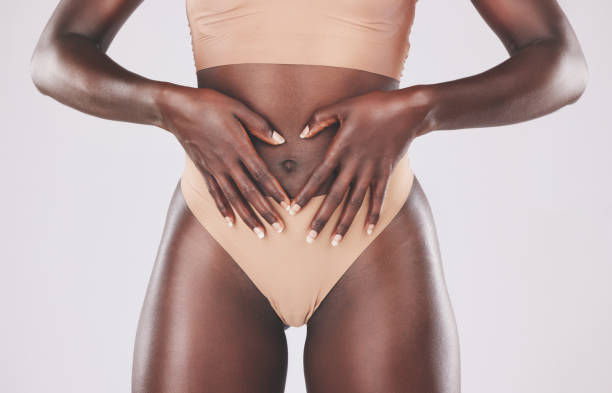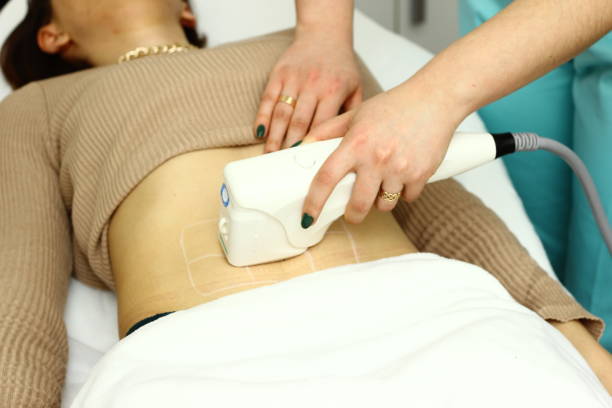Body contouring refers to a range of cosmetic procedures designed to improve the shape and tone of various areas of the body. The specific treatment that is best for you will depend on your individual needs and goals, as well as the specific areas of your body that you want to target. Here are some common treatments for body contouring:
- Liposuction: This procedure involves the removal of excess fat from specific areas of the body, such as the abdomen, thighs, buttocks, arms, or neck. Liposuction can be an effective way to sculpt and contour these areas, but it is not a weight loss solution and is best suited for patients who are already close to their ideal weight.
- Tummy tuck: Also known as abdominoplasty, this procedure involves removing excess skin and fat from the abdomen, and tightening the abdominal muscles to create a more toned and sculpted appearance. Tummy tucks are often recommended for patients who have lost a significant amount of weight, or for women who have had multiple pregnancies.
- CoolSculpting: This non-invasive procedure uses a special cooling technique to freeze and destroy fat cells in specific areas of the body. The body then naturally eliminates these fat cells over time, resulting in a more contoured appearance. CoolSculpting is often used to target areas such as the thighs, abdomen, or love handles.
- Body lift: This procedure is designed to address sagging skin and excess fat in multiple areas of the body, such as the abdomen, buttocks, and thighs. It may involve a combination of procedures such as a tummy tuck, thigh lift, and buttock lift.
It’s important to remember that there is no “best” treatment for body contouring – the right choice for you will depend on your individual needs and goals. You should consult with a qualified cosmetic surgeon to determine which procedure or combination of procedures is best suited for you.

How long do body contouring results last?
The duration of body contouring results depends on several factors, including the specific procedure performed, the patient’s individual biology and lifestyle habits, and how well the patient maintains their weight after the procedure. In general, the results of body contouring procedures can be long-lasting if the patient takes care of themselves and maintains a healthy lifestyle.
For liposuction, the results are considered permanent, as the fat cells removed do not grow back. However, if a patient gains weight after the procedure, the remaining fat cells can still enlarge and impact the overall appearance of the treated area. Therefore, maintaining a stable weight through healthy diet and exercise is important for sustaining liposuction results.
Tummy tucks, body lifts, and other surgical procedures that involve skin removal and tissue tightening can provide long-lasting results, but the aging process and lifestyle factors can impact the longevity of these results. Patients who maintain a healthy lifestyle, including exercise and a balanced diet, can often prolong the results of these procedures.
Non-invasive procedures like CoolSculpting may require multiple treatments to achieve the desired result, and maintenance treatments may be necessary to sustain the effects.
Overall, it’s important for patients to understand that body contouring procedures are not a substitute for a healthy lifestyle, and that maintaining a stable weight through diet and exercise is crucial for sustaining the results of these procedures.
Does body contouring really work?
Yes, body contouring can be an effective way to sculpt and tone specific areas of the body. The results of body contouring procedures can be noticeable and long-lasting, helping patients achieve a more attractive and confident appearance.
However, it’s important to note that body contouring is not a substitute for weight loss or a healthy lifestyle. These procedures are intended to address specific problem areas, and are best suited for patients who are already close to their ideal weight and have maintained a stable weight for some time.
The effectiveness of body contouring procedures also depends on several factors, including the specific procedure performed, the patient’s individual biology and lifestyle habits, and the skill and experience of the surgeon performing the procedure. Patients should choose a qualified and experienced cosmetic surgeon who can provide personalized treatment and advice based on their individual needs and goals.
Overall, body contouring can be an effective way to improve the shape and tone of specific areas of the body, but it’s important to approach these procedures with realistic expectations and a commitment to maintaining a healthy lifestyle.

How many sessions do you need for body contouring?
The number of sessions required for body contouring depends on the specific treatment method being used, the individual’s body, and their desired results. Here’s a general guideline for some common body contouring methods:
- CoolSculpting (Cryolipolysis): Typically, 1-3 sessions are needed for visible results, but some individuals may require more sessions, depending on the size and number of areas being treated. Results are often visible after 1-3 months.
- SculpSure (Laser Lipolysis): Most people see results after 1-2 sessions, but a second session may be recommended for optimal results, especially if treating larger areas.
- Ultrasound Cavitation: Usually, 6-12 sessions are recommended for noticeable results, with treatments often spaced a week or two apart.
- Radiofrequency (RF) Skin Tightening: Typically, 6-8 sessions are recommended for skin tightening and body contouring, spaced about a week or two apart.
- Liposuction (Non-surgical or Traditional): This involves a single session, although some people may require multiple areas to be treated or a follow-up procedure for further contouring.
The best way to determine the number of sessions for your goals is to consult with a licensed practitioner who can assess your specific needs and recommend an individualized treatment plan.
